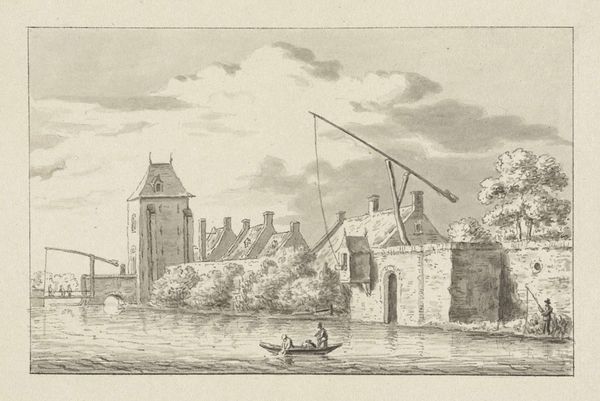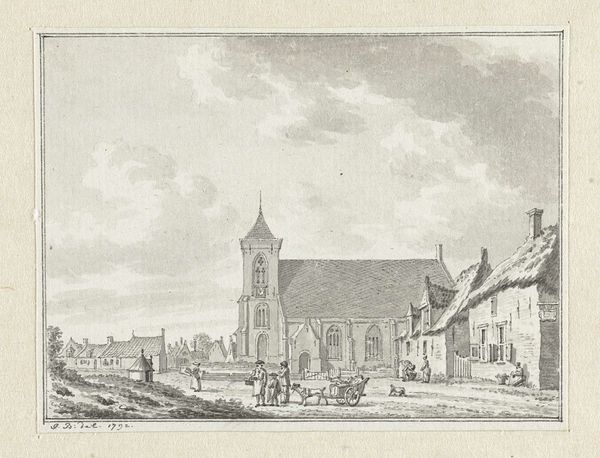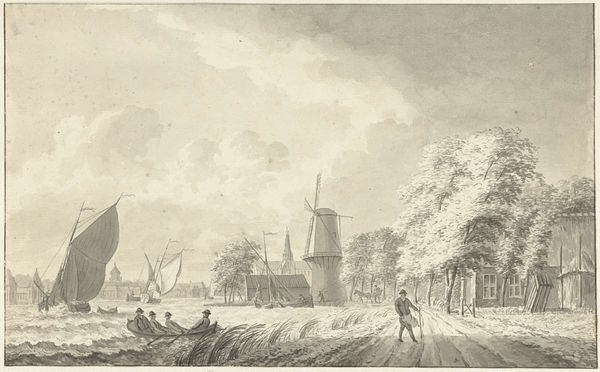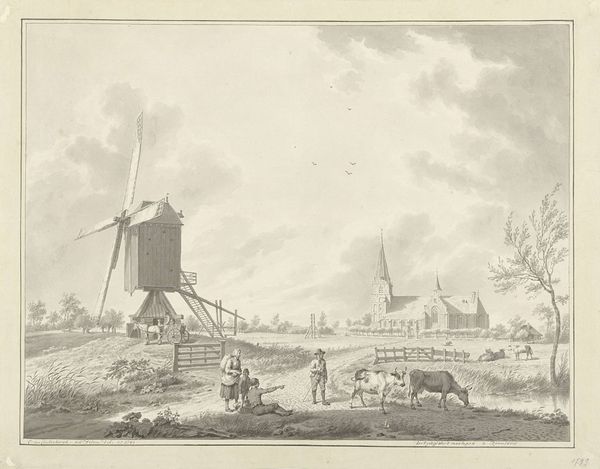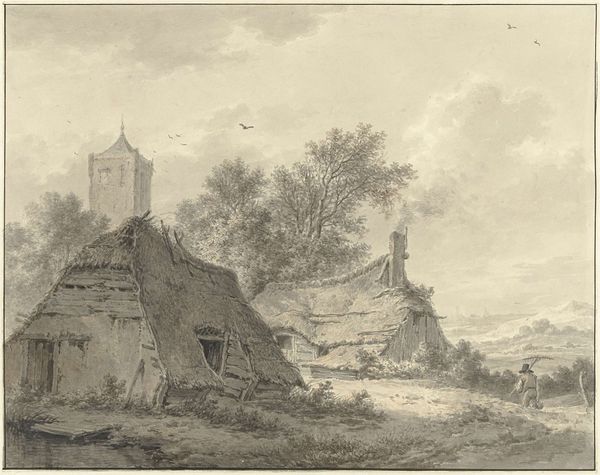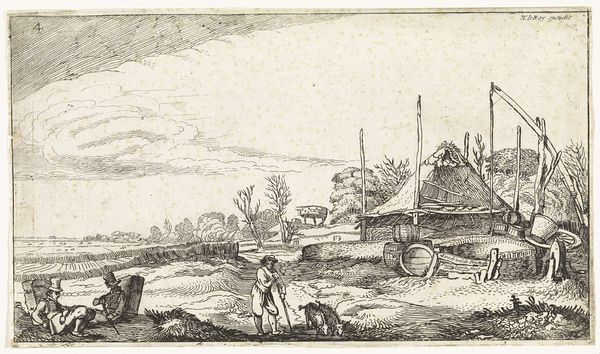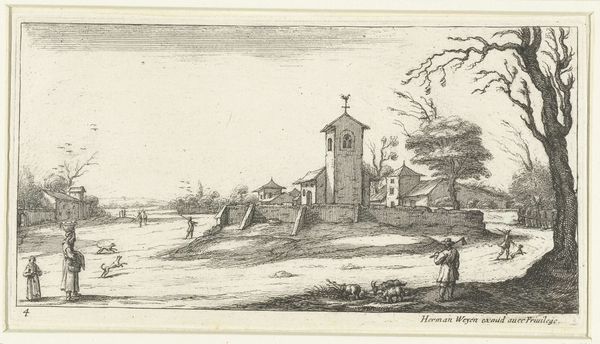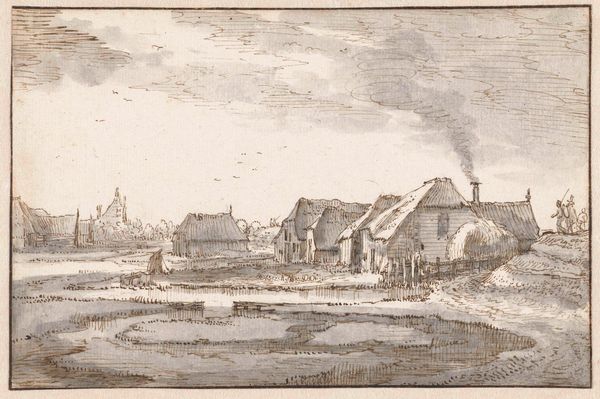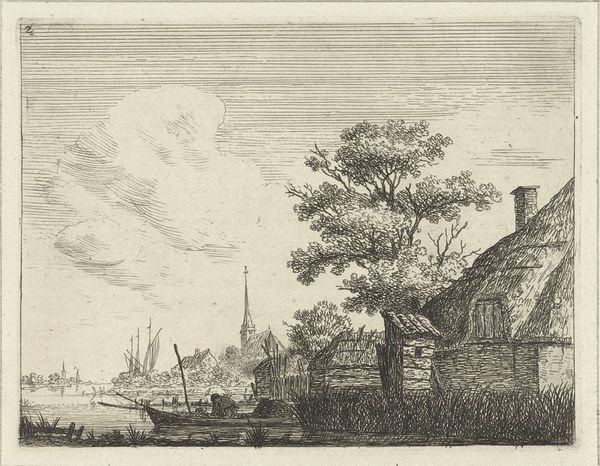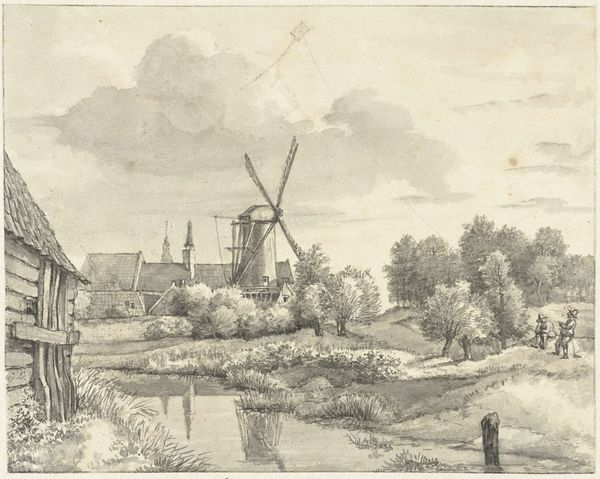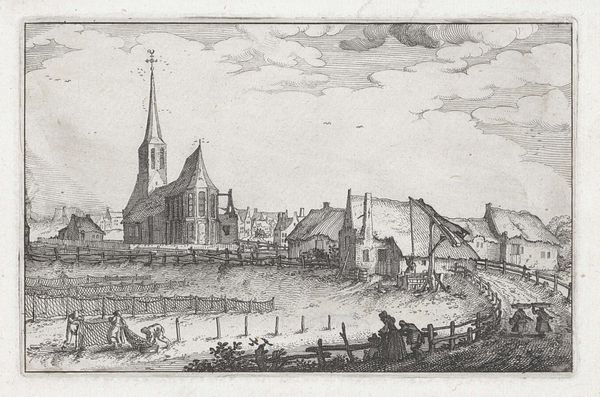
etching, plein-air, engraving
#
dutch-golden-age
#
etching
#
plein-air
#
landscape
#
genre-painting
#
engraving
Dimensions: height 90 mm, width 117 mm
Copyright: Rijks Museum: Open Domain
Curator: Look at the crisp detail in "Eendenjacht," or "Duck Hunting," an etching and engraving created by Hendrik Meijer in 1784. What strikes you initially? Editor: The monochromatic palette definitely gives it a certain austerity. But look closer; the labor invested here is meticulous. The reeds alone are rendered with incredibly precise linework, it's a really dedicated work! Curator: I find myself pondering the symbology of hunting during this period. Genre scenes like this aren't merely records of daily life, especially with the prominent presence of the church in the background. Is there a tension being expressed between nature and faith, or perhaps even sustenance and sin? Editor: Perhaps the choice of materials gives us a clue. Etching and engraving are intaglio methods—requiring carving and the application of pressure. It suggests a more calculated, controlled means of representation in line with a genre painting designed for commercial circulation, the landscape almost feels constructed for it. Curator: Indeed. Dutch Golden Age art frequently juxtaposed everyday scenes with reminders of mortality and morality. Birds themselves are often representative of the soul, its freedom or capture… Could the ducks be understood metaphorically? The two hunters are at a certain remove as their work involves risk- how is it weighted against the architecture looming so greatly in the background? Editor: I agree; there's a strong didactic feeling embedded within it. The figures also make this an outdoor tableau, and perhaps a celebration of rural labor—labor made accessible and consumable. Curator: In a way, then, the etching democratizes the imagery… It moves beyond the purely allegorical and opens up a space for a kind of lived narrative. Editor: Precisely! The materiality becomes integral to the message; it allows this piece to transcend being a mere observation. It is an active articulation. Curator: It gives the idea of everyday labor the depth it deserves by using printmaking as an accessible channel for reflection, and social instruction. Editor: Absolutely. It brings the art down to earth, one that many might be involved in, highlighting labor, commerce, and their interactions in art historical terms.
Comments
No comments
Be the first to comment and join the conversation on the ultimate creative platform.
